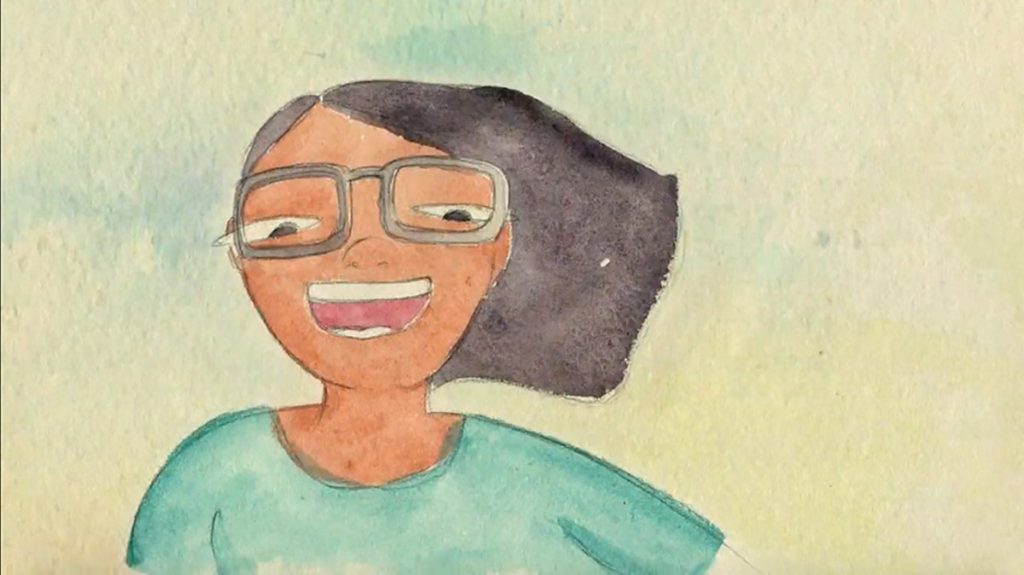We are delighted to have filmmaker Suchana Saha talk to us about not just one but two films in the Competition Selection of the 5th Femme Filmmakers Festival. Look out for both Find Me Mother and The Story of Painted Songs when they are officially released to the public.
questions by Morgan Roberts and Robin Write
FILMOTOMY: Who is another female filmmaker who inspires you? What work of theirs resonated with you?
SUCHANA SAHA: Most inspiring would be Caroline Leaf, Michaela Pavlátová, Joanna Quinn but the list goes on. The Street (1976) by Leaf and Tram (2012) by Pavlátová are my favourite from them.
#MeToo and #TimesUp have been attempting to push for systemic industry changes. What are some ways that these movements are working? What are some changes we should continue to work toward?
The best part I feel is people got the courage and confidence to fight back the hegemonising male patriarchy.
Change begins with you, I believe that. I also believe in equality. We have to keep learning and evolving. Some changes what I will do is while nurturing my own daughter/son is to imbibe in them the principle of equality and how the power equation should be equally balanced. Drops of water make an ocean.
What are the top three things every filmmaker should have? Could be personal qualities or tools or a combination of both.
Honesty.
Learning.
Unlearning.
Both of these films are very emotive and powerful. How do you create emotions through this type of artwork?
I try to be as much as honest as possible. That helps me navigate emotions. Sometimes it becomes self-destructive to explore emotions so deeply, but eventually I compose myself and continue my work.
And talk a little about the animation process. Both films are clearly differently in their look and movements. Why did you choose these styles for this particular stories?
Maa Tuki (Find me, Mother) was classical hand-drawn animation with hand-painted watercolour frames. But the faded, transparent attribute of water colour was suitable for the nostalgia in the storyline.
But on the other hand, Poter Kotha (The story of Painted Songs) was based on a heritage artform which is on the brink of extinction due to consumerism. So I wanted this film to document some of the original artwork as a part of restoration and nostalgia. The story decided its treatment.
Is Find Me Mother based on personal experiences?
Yes, Maa Tuki (Find Me, Mother) is primarily based on the story of me and my mother.
And how much research did you have to do for The Story of Painted Songs? How much of it was what you already knew?
Pattachitra is one of the oldest known artform from my native place, Bengal. I am interested in exploring Indian artforms and its history. I started reading few books on the origin of Bengal art form. About the history of Jamini Roy’s eyes. I went to a villages in Naya, Medinipur where still pattachitra artists live and still practise this artform. I stayed in one of the artists house for few days, came to know more about them. Luckily I spent time with the oldest artist in the village, his point of view of the changing scenario really helped me form the narrative. Then I came back with my team to shoot some footages and scan some paintings. And thus, the film happened.
How does animating these two wonderful stories differ from that of say live action?
I believe that, “Animation begins where live actions give up”.
I am a storyteller primarily. Both my films needed animation so I animated them. Animation is a tool I have. I believe I am exploring that right now. The time and space exploration is much more in an animated film. The universal connect is also enhanced.
As a director, how do you facilitate your vision? Sometimes, people share their opinions on set. How do you take in those opinions while executing your vision for the film?
Everyone has opinions, and I carefully listen to all of them. For Maa Tuki, my editor and additional screenplay writer, Hemanth had some beautiful ideas which I incorporated to enhance the storytelling. My teachers, mentors also helped me during storyboarding. But there were few negative feedbacks to decrease the production time and for censorship which I had to ignore and move ahead. At times its difficult, but it’s a process to learn to be selective to opinions and do what works best for the story.
What was the most memorable moment you had in a cinema?
When I showed my mother Maa Tuki , she cried.
If you could shadow another filmmaker for a day, who would it be and why?
My all-time favourite is Michael Dudok De Wit. His powerful storytelling and simplicity moves me. I want my films to emote the same way he does. I met him once and he was so grounded and honest, that I would like to learn behavioural lessons from him as well.
If you take all things film-related off the table, what would you have done instead ?
It’s another long list. Computer programming, Psychology, Cooking are the top three things.

